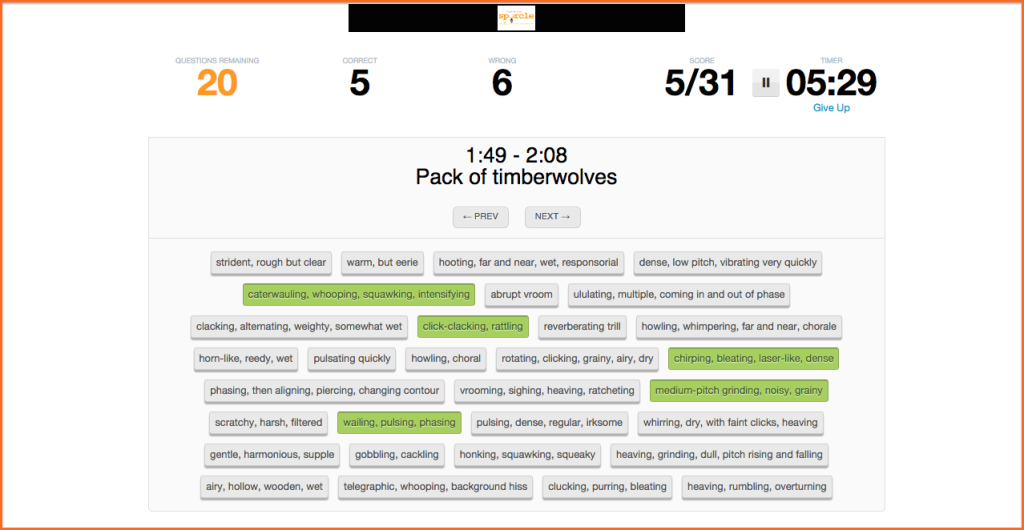Critical media response to Aural Memory, a Sawyer Seminar event with Karin Bijsterveld and Wolfgang Ernst (March 31, 2014)
How good are your sonic skills? Would you qualify as aural archivist?
Listen to these sounds and see if you can match them to descriptions of their qualities!
Click on the screen grab to go to the game!
Description:
It won’t be enough here to merely recognize what sounds you hear: you have to describe them, and as precisely so as possible, so others could identify what you are talking about. An aural game of taboo. Imagine that you have to create an efficient cataloguing system for a sonic archive. Efficiency means that you should be able to quickly find sounds by their qualitative descriptors. It also means that you might want to keep objects comparable by limiting your labels. Probably sounds easier than it is. – Give it a try!
Karin Bijsterveld recounts that the Stasi had to rely on very similar skills in their surveillance practices. Even though we might no longer be subject to bugging and eavesdropping by the Stasi, exhaustive data collection is very much a concern today. The evental quality of listening as a sonic event is highlighted in this game as it is in Wolfgang Ernst’s argument. He also draws our attention to the inescapable evanescence of sound and wonders if sound can thus be archived at all. Only written words can be preserved – see, and hear, how far you can get.
Instructions:
Click on the screen capture above to go to the game on sporcle.com. The audio from the embedded YouTube video will play a sequence of 31 sounds. Each sound will be played twice. Your job is to match each sound (named by time code and ID phrase) to a set of descriptive terms that you can click on. Each set of terms goes with only one sound. You will need to pay special attention to the qualities of each sound, not just what it is a sound of. Consider timbre, rhythm, associative qualities, and source. (As Bijsterveld described, these were among the aspects Stasi audio analysts were required to include in their descriptions of surveillance material.)
To begin the game, press the green “Play Game” button. Then take a moment to familiarize yourself with the verbal descriptions of the sounds. After you have looked at the descriptions, start the YouTube video to hear the sounds. You may only guess once for each sound, so choose carefully. If you need more time, or need to hear a sound again, you may pause and replay the YouTube video.
editors/producers: Steffi Probst and T. Brandon Evans
